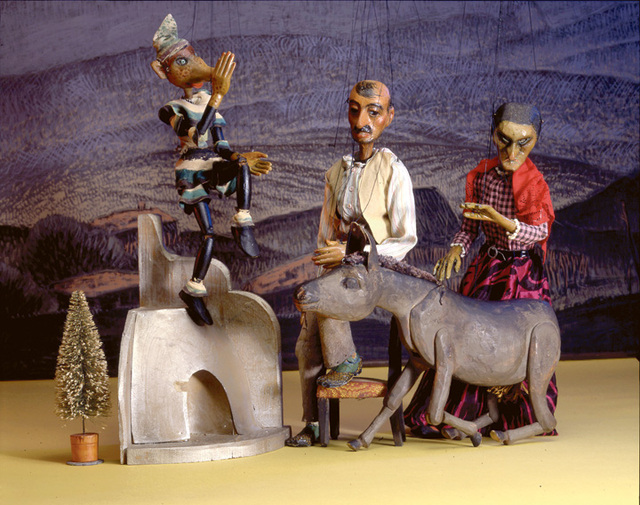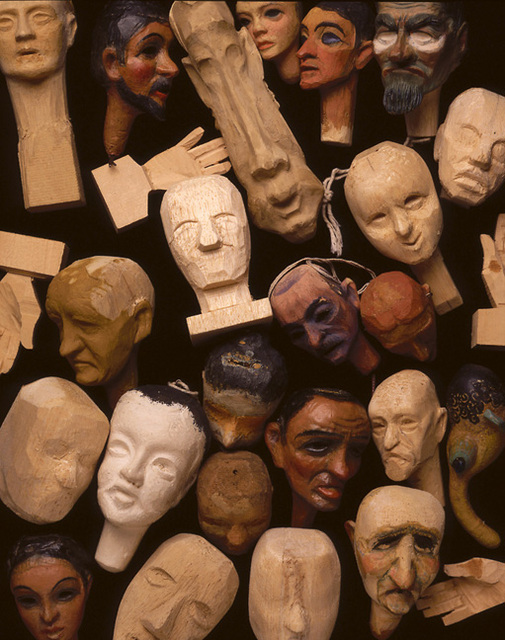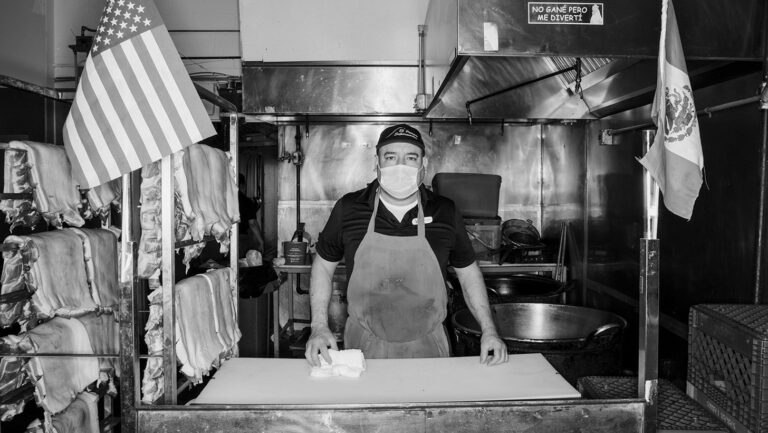Marionettes are strange things. The most complex type of puppet, they are carved from wood, jointed and controlled by a “manipulator” who works the strings from above the marionette’s head. The movements of marionettes are otherworldly; never purely realistic, they evoke the sense that nothing is completely within one’s control. A master manipulator takes years to develop his or her skill, as does the craftsman who carves the forms. Gustave Baumann was both.Born in Germany in 1881, Baumann emigrated to the United States at the age of 10, returning to Munich in his 20s to study at the Royal School of Arts and Crafts. In 1918, Baumann moved to Santa Fe, married the singer/actress Jane Henderson and together they raised their daughter, Ann. During this time, he and Jane were also developing the marionette theater that would eventually become a part of Santa Fe legend. Though initially intended as a form of entertainment for family and friends, the Christmas performances grew so popular they were eventually moved from their living room to such venues as St. Francis Auditorium. The last show was in 1959, and upon his passing in 1971, Jane and Ann donated Baumann’s work to the New Mexico Museum of Art.Jan. 30 through May 10, the New Mexico Museum of Art in Santa Fe will exhibit Baumann’s marionettes, prints and paintings as part of Pulling Strings: The Marionettes and Art of Gustave Baumann . The central focus of the exhibit are the stages that represent several of his plays, most of which have not been seen in 50 years. The marionettes used are exact replicas of Baumann’s originals. Replicating the plays as they were originally produced, however, is trickier. With no film of the plays as initially staged, Tim Rodgers, curator of Pulling Strings , says that there will be seven stages “setup in relation to surviving scripts, old photographs and one by guesswork based on descriptions. The stage setups are approximations based on the evidence we have.”A contemporary work, “A Party for Papa Gus,” was written specifically for this exhibition and will be performed the first Sunday of the month through May. Many of the works center largely on life in New Mexico, recalling tales of Pecos Bill, Tia Sucia and Doña Mala, and the pueblos of San Felipe and San Isidro. Other stories are more exotic, creating imaginary islands and charmed characters believed to be based on the Baumann family’s inner circle. A video of a 1994 re-created performance of “The Folk Legend of San Isidro” will also be shown for the duration of the exhibit. Pulling Strings is a rare show, one that offers a glimpse into New Mexico’s past through the work of an old European art form. In a time when nearly everything is easily archived for perpetuity, the careful reconstruction of Baumann’s art is itself precious; not an echo, but a retelling.
The opening reception for Pulling Strings: The Marionettes and Art of Gustave Baumann will be held on Friday, Jan. 30, from 5:30 to 7:30 p.m. For hours and admission prices, go to mfasantafe.org.











